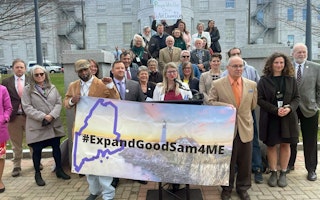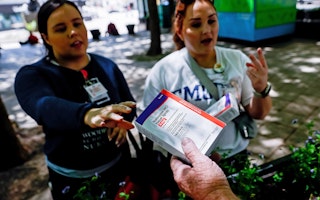“I’m the Evidence”: Video Advocacy to Prevent Drug Overdose Deaths
By Roxanne Saucier
Today marks Overdose Awareness Day, and drug overdose survivors and communities all over the world are holding vigils, rallies, and media campaigns to draw much-needed attention to harm reduction responses.
As Azadeh Momenghalibaf wrote last week, overdose deaths are preventable, yet they still take too large a toll. The media often reports on celebrity deaths, but most people are unaware just how staggering the numbers are when it comes to overdoses. For example, in the European Union, there is the equivalent of an overdose death every hour. In many other countries, we don’t have good statistics on the exact number of deaths, but people know their friends are dying.
A new campaign from the Eurasian Harm Reduction Network and the Harm Reduction Coalition called “I’m the Evidence. Naloxone Works” calls attention to naloxone, an antidote to opiate overdose and calls for laypeople—drug users, pain patients, and their families and friends—to have access to this life-saving medicine for emergencies. Scores of people have posted video testimonials on naloxone—how the medicine gave them a second chance or how they used it to save a friend’s life. An example from China is above, and you can see more on the Facebook page I'm the Evidence.
Many of the posts from the Facebook page are from the United States, but drug users in Thailand, Tajikistan, Russia, and elsewhere are saving lives with naloxone too. At a recent conference, Tuan from Vietnam told his own story:
In the past ten years, heroin injection has grown popular in Vietnam. As the number of heroin injectors increases, so does the number of overdose cases.
I was also a drug user, and I witnessed many painful overdose deaths with my own eyes. My best friend was an overdose victim. He died of an overdose, right in my arms. That was an unforgettable moment, and it helped me want to live and start over. I’ve stopped using drugs and I am currently the leader of a peer support group for drug users in Ho Chi Minh City.
According to an unofficial survey conducted in our city, from 2007 to 2009, there were about 100 overdose deaths. But, based on my experience and observation, the real number is much higher. In December 2009 alone, in our working area, there were 16 overdose cases, in which 14 people died. It’s a pity that we didn't know anything about naloxone back then. When overdoses happened, we could only try mouth-to-mouth or call the person's name, which usually didn't work. When I saw someone die of an overdose, it haunted me, and I always felt guilty that I couldn't do much.
Fortunately, last August, we got information about naloxone from a drug user in Hanoi. This person, who had attended an overdose training workshop at an international conference, had used an expired vial of naloxone to save another drug user who’d overdosed just two days after the conference. Five other drug user groups then received training and naloxone from a local organization.
Now we’ve provided information and skills on overdose prevention and response to hundreds of drug users. We formed an “overdose rescue team,” which consists of five core members who are also drug users, and distributed pamphlets on overdose with the contact information of the five members whom people can call if they see someone overdose.
The first time we received a call, another member and I were close to that area, so we went right away. When we arrived, the victim was hardly breathing. When we injected the naloxone, we were really worried, but the person slowly woke up after just five minutes. We were all very surprised and happy, and all our doubts about naloxone were swept away.
Our group has since reversed other overdoses. Being able to save lives is very meaningful to us, especially in one case when the victim had just turned 18. The effects have gone beyond our expectations. Even the police—they were there when we saved the second person. The policeman told us if anything bad happened to the overdose victim, we would be held responsible. But the person was revived. So later, we were contacted directly by the district police for the next overdose case.
The residents where we work have seen us in a different light, knowing the good things that we are doing. Especially when the people who’ve saved others used to be considered bad people in the community. Now all the compliments, or just pats on the shoulder from other people, are a great motivation for us. The drug users who were revived are now peer educators, paying it forward by helping out other drug users. Our groups feels that this is the most meaningful thing that we have ever done in our lives.
Sharing this story with you, I want to pass on something that a drug user said when he was revived: "Maybe I won't be able to quit using drugs after this, but now I know that there's someone who cares about me, and that will be my motivation to live."
On Overdose Awareness Day, join the call for wider access to naloxone by posting your testimony to I’m the Evidence. The stories will be forwarded to the World Health Organization, to encourage them to do more to respond to overdose. You can also join the Drug Policy Alliance’s Twitter campaign by tweeting about overdose with the hashtag #OD11, or do a keyword search for #OD11 to read all the tweets.
Check out Drug Policy Alliance’s Overdose Awareness Day site for more ways to get involved.
Roxanne Saucier is a researcher and analyst for the Open Society Public Health Program.


